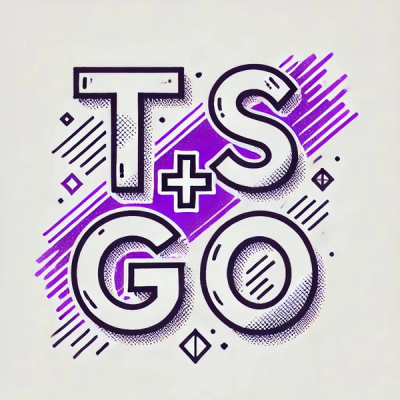
Security News
NIST Under Federal Audit for NVD Processing Backlog and Delays
As vulnerability data bottlenecks grow, the federal government is formally investigating NIST’s handling of the National Vulnerability Database.
github.com/bakpakin/editgrid

Editgrid is a module that implements a grid that automatically scales its resolution, like the background grids in 3d modeling software like blender. Its great for level editors and the like because you can zoom in and out without loosing sight of the gridlines. It also converts screen coordinates to grid coordinates and vice versa.
Editgrid is also useful for adding a debugging background to games - just call editgrid.draw(camera) with a gamera or HUMP camera, or just any table.
Place editgrid.lua in your project and require it like so:
local editgrid = require "editgrid"
editgrid.draw(camera, visuals)
Draws a grid to the screen from the perspective of an optional camera with optional visual effects.
camera can be a HUMP or gamera camera, as well as a table containing the following:
local camera = {
x = 20,
y = 20,
zoom = 2,
angle = math.pi/2,
sx = 5,
sy = 5,
sw = love.graphics.getWidth() - 10,
sh = love.graphics.getHeight() - 10
}
(x, y) -- the point the camera is looking at. Default is (0, 0).zoom -- the zoom factor of the camera. Default is 1.angle -- the angle of the camera. Default is 0.(sx, sy, sw, sh) -- the clipping rectangle (scissor rectangle) for the camera. By default,
the camera draws to the whole screen (0, 0, love.graphics.getWidth(), love.graphics.getHeight()).All functions in Editgrid that require a camera can use all types of cameras.
visuals should be a table containing the following:
local visuals = {
size = 100,
subdivisions = 5,
color = {128, 140, 250},
drawScale = false,
xColor = {255, 255, 0},
yColor = {0, 255, 255},
fadeFactor = 0.3,
interval = 200
}
size -- the distance between each major subdivision at 1x zoom. Default is 256.subdivisions -- the number of minor subdivisions between each major subdivision. Default is 4.color -- a list of three numbers representing the rgb values of the grid lines. Default is {220, 220, 220}.drawScale -- boolean indicating if the coordinate value is drawn for each gridline. Default is true.xColor -- color of the x axis. Default is {255, 0, 0} (red).yColor -- color of the y axis. Default is {0, 255, 0} (green).fadeFactor -- color multiplier on subdivision grid lines. For example, if color is {100, 100, 100} and fadeFactor is
0.8, then the color of the minor gridlines will be {80, 80, 80}. Default is 0.5.interval -- optional argument that makes the grid use a fixed interval in world space instead of scaling with camera zoom.All functions in Editgrid that require a visuals table expect this format.
local newx, newy = editgrid.convertCoords(camera, visuals, src, dest, x, y)
Converts coordinates from one coordinate system to another. src and dest are
the source coordinate system and destination coordinate system respectively, and can each be one of
three strings: "screen", "world", and "cell". For example, to convert screen coordinates to world
coordinates, say for mouse interaction, let src = "screen" and dest = "world". "cell" coordinates
are based on the cells that the camera sees on the screen; also, all "cell" coordinates are integers.
local worldx, worldy = editgrid.toWorld(camera, screenx, screeny)
Converts screen coordinates to world coordinates.
Shortcut for editgrid.convertCoords(camera, nil, "screen", "world", screenx, screeny)
local screenx, screeny = editgrid.toScreen(camera, worldx, worldy)
Converts world coordinates to screen coordinates.
Shortcut for editgrid.convertCoords(camera, nil, "world", "screen", worldx, worldy)
local vx, vy, vw, vh = editgrid.visible(camera)
Gets an Axis Aligned Bounding Box (AABB) containing the visible part of the grid that can be seen from the camera. May contain some non-visible portions of the grid if the camera angle is not zero.
local interval = editgrid.minorInterval(camera, visuals)
Gets the distance between minor grid lines (in world space) on the screen. To get the
distance in screen space, just multiply interval by camera zoom.
local interval = editgrid.majorInterval(camera, visuals)
Similar to editgrid.minorInterval, but returns the distance between major grid lines (the bolder grid lines).
local grid = editgrid.grid(camera, visuals)
grid:draw() -- Equivalent to editgrid.draw(camera, visuals)
local newx, newy = grid:convertCoords(src, dest, x, y) -- Equivalent to editgrid.convertCoords(camera, visuals, src, dest, x, y)
local worldx, worldy = grid:toWorld(x, y) -- Equivalent to editgrid.toWorld(camera, x, y)
local screenx, screeny = grid:toScreen(x, y) -- Equivalent to editgrid.toScreen(camera, x, y)
local vx, vy, vw, vh = grid:visible() -- Equivalent to editgrid.visible(camera)
local minor = grid:minorInterval() -- Equivalent to editgrid.minorInterval(camera, visuals)
local major = grid:majorInterval() -- Equivalent to editgrid.majorInterval(camera, visuals)
Instead of passing a camera and a visuals variable around all the time for Editgrid's functions,
Editgrid can create a grid object with methods that can be called with colon syntax. The camera and visuals
tables can be updated at any time without any adverse effects.
If there are bugs or you want to request features, feel free to submit issues.
FAQs
Unknown package
Did you know?

Socket for GitHub automatically highlights issues in each pull request and monitors the health of all your open source dependencies. Discover the contents of your packages and block harmful activity before you install or update your dependencies.

Security News
As vulnerability data bottlenecks grow, the federal government is formally investigating NIST’s handling of the National Vulnerability Database.

Research
Security News
Socket’s Threat Research Team has uncovered 60 npm packages using post-install scripts to silently exfiltrate hostnames, IP addresses, DNS servers, and user directories to a Discord-controlled endpoint.

Security News
TypeScript Native Previews offers a 10x faster Go-based compiler, now available on npm for public testing with early editor and language support.